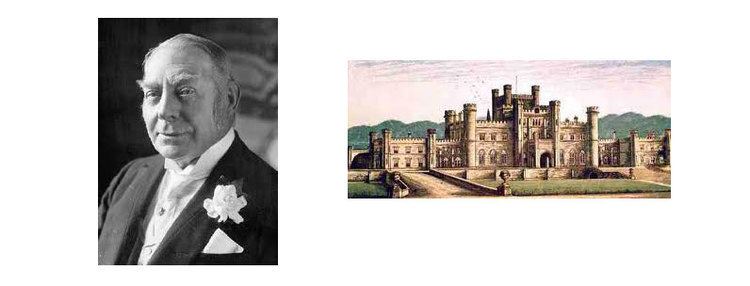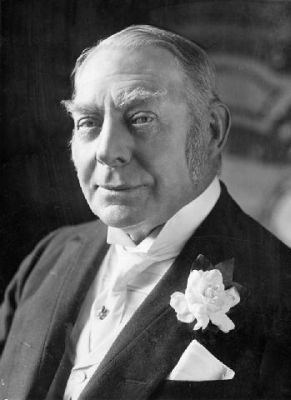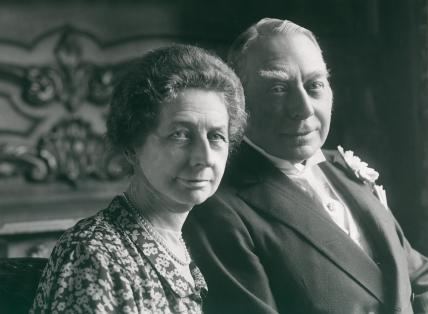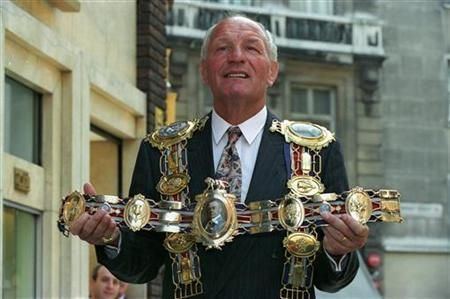Name Hugh 5th | Role 5th Earl of Lonsdale | |
 | ||
Died April 13, 1944, Barleythorpe, United Kingdom | ||
Hugh Cecil Lowther, 5th Earl of Lonsdale, (25 January 1857–13 April 1944) was an English nobleman and sportsman.

Biography

The second son of Henry Lowther, 3rd Earl of Lonsdale, he succeeded his brother, St George Lowther, 4th Earl of Lonsdale, in 1882.

Before obtaining his inheritance, Hugh had in 1878 married Lady Grace Cecilie Gordon, third daughter of Charles Gordon, 10th Marquess of Huntly. Her family opposed the marriage as Hugh was then not wealthy and seemed irresponsible. This proved to be correct as the following year he invested in cattle in America; the venture collapsed and the Lowther family was forced to save him.

The couple then lived at Barleythorpe Hall near Oakham and Grace became pregnant but she had a fall while hunting and lost the baby. After this she was unable to bear children and remained a partial invalid for the rest of her life.

He inherited enormous wealth, derived from Cumberland coalmines, and owned 75,000 acres of land. He had residences at Lowther Castle, at Whitehaven Castle, Barleythorpe and Carlton House Terrace, London. He devoted his wealth to a life of ostentatious pleasure.
After the scandal of an affair with the actress Violet Cameron Lonsdale set out in 1888 to explore the Arctic regions of Canada as far north as Melville Island, nearly dying before reaching Kodiak, Alaska in 1889 and returning to England. His collection of Inuit artefacts that he assembled during his explorations in Alaska and north-west Canada at this time is now in the British Museum.
Lord Lonsdale was known as the Yellow Earl for his penchant for the colour. He was a founder and first president of the Automobile Association (AA) which adopted his livery. He was an avid sportsman and bon vivant and was known by some as "England's greatest sporting gentleman". He was a founding member and first president of the National Sporting Club and he donated the original Lonsdale Belts in 1909 for the boxing championship trophy. His name was later given to the Lonsdale clothing brand of boxing garments and the Lonsdale cigar size.
Lonsdale was part of the famous wager with John Pierpont Morgan over whether a man could circumnavigate the globe and remain unidentified. He enjoyed foxhunting, serving as Master of The Quorn from 1893 to 1898 and of the Cottesmore Hunt for long periods. He was also a keen football fan, and was chairman of Arsenal Football Club for a brief period in 1936 (having previously been a club director) and later became the club's honorary president.
In August 1895 the German Emperor Wilhelm II visited Lowther Castle for some grouse-shooting. The kings of Italy and Portugal later came to stay, and the Kaiser a second time in 1902. The Kaiser conferred upon the Earl a knighthood of the first class of the Order of the Prussian Crown.
He was Assistant Adjutant-General for the Imperial Yeomanry in the Second Boer War, from 28 February 1900 until 1901. During the First World War his chief role was as a recruitment officer of both men and horses. He formed his own pals battalion, the Lonsdales (11th Battalion, Border Regiment). He had helped to found Our Dumb Friends League (now Blue Cross) and was its chairman during the war.
After the war Hugh gave up hunting and became more involved with race horses. He became a senior steward of the Jockey Club. He had only one major win, the St Leger in 1922. He was also the first president of the International Horse Show at Olympia. Although he was a Peer, he was rarely seen in the House of Lords.
Because of his extravagance he was forced to sell some of his inherited properties. In 1921 Whitehaven Castle was sold, and in 1926 Barleythorpe. The same year the west Cumberland coalmines closed. In 1935 he moved from Lowther Castle because he could no longer afford to live there and moved to much smaller accommodation. Grace died in 1941 and three years later, Hugh died at Stud House, Barleythorpe, aged 87.
His free-spending had largely wrecked the estate, and his heir, his brother Lancelot, the 6th Earl was forced to auction off the contents of Lowther Castle in 1947. This proved to be the largest English country house sale of the 20th Century.
Lord Lonsdale was the subject of a Douglas Sutherland biography, The Yellow Earl: The life of Hugh Lowther (ISBN B0006BNPO6), published by Cassell in 1965.
